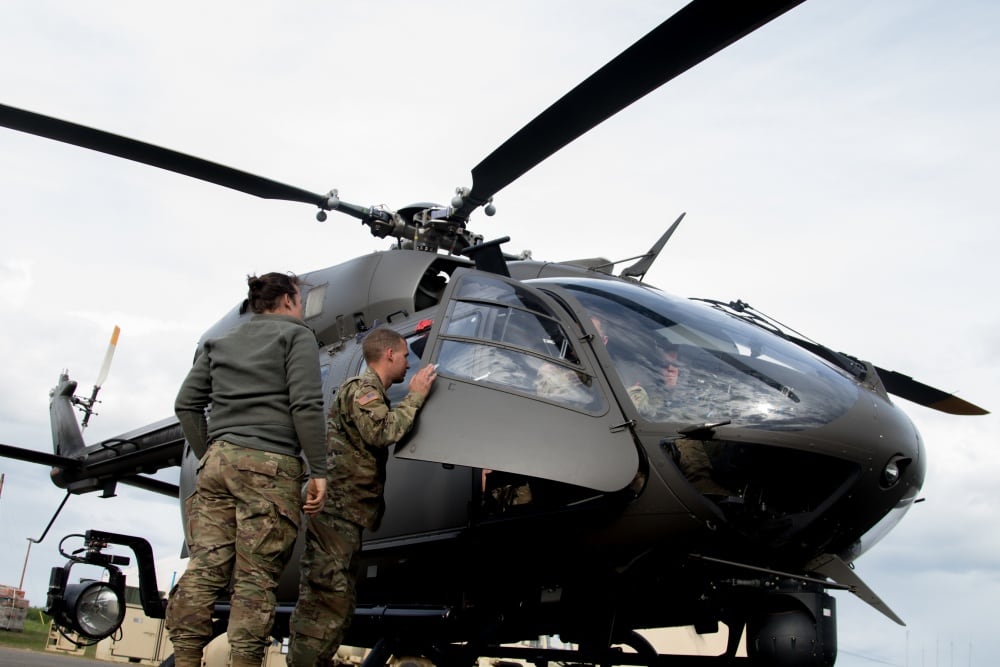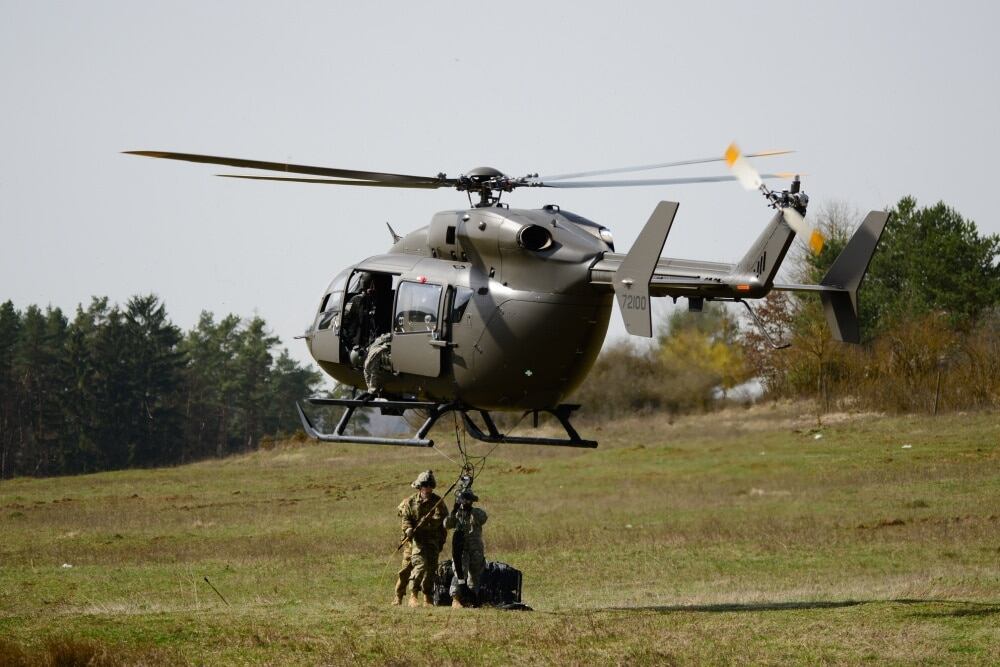WASHINGTON — Without an additional $157 million, U.S. Army aviation readiness could suffer, according to an omnibus reprogramming request sent to Capitol Hill on June 25.
The Army is asking congressional defense committees to approve the injection of $157 million into Army aviation readiness drawn from other fiscal 2019 accounts to fill a funding gap.
“Funds are required to support Army flight training, which includes rotary wing flight instructor support, repair parts, fuel, simulations, and maintenance of Army flight training aircraft,” the document states.
Because the Army retired its TH-67 training helicopters and replaced them with Airbus-manufactured LUH-72 Lakota light utility helicopters as the official entry-level rotary-wing training aircraft and also due to a re-solicitation of the maintenance contract, the service incurred “unexpected” one-time costs and “created a shortfall in the Army flight training program,” the document reads.
The Army warns in its request that without the additional funding, the level of aviation readiness will decline and the service will be unable to produce a sufficient number of pilots to man its combat aviation brigades.
The absence of sufficient funding will also affect the graduate pilot course, which would result in the Army’s inability to train pilots in the future, the request states.
The Army’s transition from TH-67s to the Lakota has been a bumpy road; mainly roughened up by an ugly legal battle over the service’s decision to sole source Lakotas for the fleet rather than hold a competition to replace the legacy aircraft.
RELATED

The decision to retire the TH-67 trainers were part of a larger initiative to restructure Army aviation. That restructuring included the retirement of the OH-58D Kiowa Warrior armed scout helicopter, replacing it with AH-64 Apache attack helicopters paired with Shadow unmanned aircraft systems already in the fleet, particularly from the Army National Guard.
Because the service was unable to purchase Lakotas at the planned pace due a stop-work order while issues were hashed out in court, the Army had to keep some legacy trainer helicopters in its fleet longer, which generated extra costs in simultaneously maintaining two different aircraft and because spare parts for the TH-67s were dwindling.
RELATED

When the Army decided to adopt the Lakota as its initial-entry rotary-wing trainer, critics claimed the dual-engine, glass-cockpit aircraft would be too complicated for beginner pilots and argued the cost would be exponentially more to maintain and fuel the new fleet.
The possibility of degraded helicopter pilot readiness in the Army comes at a time when all of the services are struggling with record-high aviation mishaps.
In 2018, Military Times and Defense News reported that manned aviation accidents across the services had spiked almost 40 percent over the past five years, killing 133 service members since 2013.
That reporting triggered Congress to order a closer look at the root causes of the accidents and established a national commission to investigate the state of military aviation safety.
At the time Defense News reviewed the data in 2018, the Army had rare good news, showing it was holding steady in the number of yearly aviation accidents from 2013 to 2017, while the rest of the military services’ mishaps were climbing. In terms of manned accidents, the Army’s mishaps actually fell slightly.
The Army partly credited its better track record to more frequent and effective training.
Jen Judson is an award-winning journalist covering land warfare for Defense News. She has also worked for Politico and Inside Defense. She holds a Master of Science degree in journalism from Boston University and a Bachelor of Arts degree from Kenyon College.






